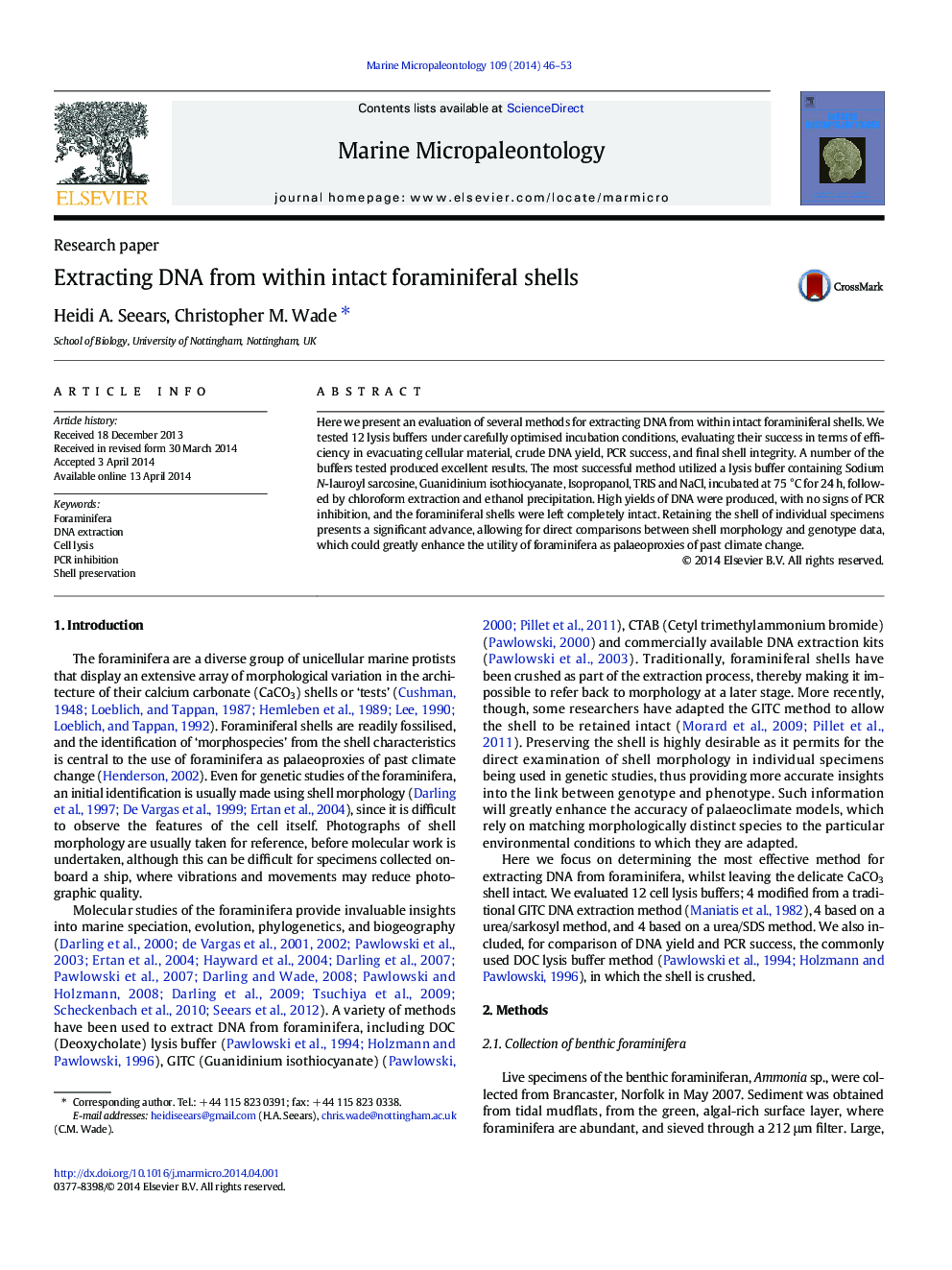| Article ID | Journal | Published Year | Pages | File Type |
|---|---|---|---|---|
| 4748884 | Marine Micropaleontology | 2014 | 8 Pages |
•Methods for extracting DNA from within intact foraminiferal shells were evaluated.•12 lysis buffers were compared under optimised incubation conditions.•High yields of good quality DNA were produced for use in PCR.•The delicate shells were retained undamaged for use in morphological analyses.
Here we present an evaluation of several methods for extracting DNA from within intact foraminiferal shells. We tested 12 lysis buffers under carefully optimised incubation conditions, evaluating their success in terms of efficiency in evacuating cellular material, crude DNA yield, PCR success, and final shell integrity. A number of the buffers tested produced excellent results. The most successful method utilized a lysis buffer containing Sodium N-lauroyl sarcosine, Guanidinium isothiocyanate, Isopropanol, TRIS and NaCl, incubated at 75 °C for 24 h, followed by chloroform extraction and ethanol precipitation. High yields of DNA were produced, with no signs of PCR inhibition, and the foraminiferal shells were left completely intact. Retaining the shell of individual specimens presents a significant advance, allowing for direct comparisons between shell morphology and genotype data, which could greatly enhance the utility of foraminifera as palaeoproxies of past climate change.
